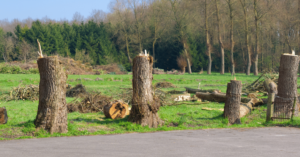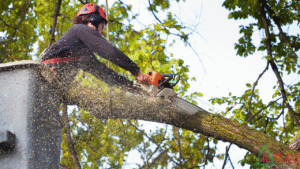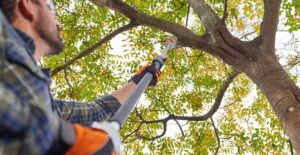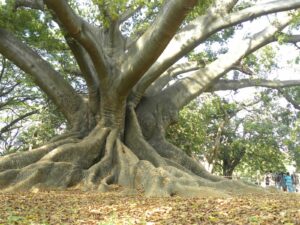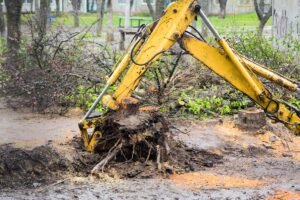County Council Tree Preservation Orders: A Comprehensive Guide
In an age where urban development accelerates and green spaces face mounting pressure, Tree Preservation Orders (TPOs) serve as crucial legal safeguards for our nation’s arboreal heritage. You might have encountered these mysterious governmental decrees if you’ve ever attempted to prune a significant tree on your property, purchased land with existing protected trees, or witnessed a neighborhood dispute over tree removal. These orders represent more than bureaucratic red tape—they embody our collective commitment to environmental stewardship and ecological preservation.
This guide explores the complexities of County Council Tree Preservation Orders, providing you with essential knowledge about their purpose, implementation, and implications for property owners, developers, and concerned citizens. As climate change concerns intensify and urban tree canopy becomes increasingly recognized as vital infrastructure, understanding these protective measures has never been more important.
What Are Tree Preservation Orders and Why They Matter
Tree Preservation Orders are legal tools used by county councils and local governments to protect specific trees, groups of trees, or woodlands that provide significant amenity benefits to the community. These orders make it a criminal offense to cut down, top, lop, uproot, willfully damage, or willfully destroy protected trees without the permission of the local planning authority.
You might wonder why certain trees merit such stringent protection. The answer lies in the extraordinary benefits mature trees provide:
Environmental benefits include carbon sequestration, air pollution filtration, stormwater management, and habitat provision for countless species. A single mature oak can support over 500 different species and absorb approximately 48 pounds of carbon dioxide annually.
Quality of life benefits encompass shade provision, temperature moderation (reducing urban heat island effects), noise reduction, privacy screening, and significant aesthetic value. Properties with mature trees typically command higher real estate values—often 5-18% higher than comparable properties without trees.
Historical and cultural significance may derive from a tree’s age, rarity, landmark status, or association with historical events. Some protected trees serve as living monuments, connecting generations across centuries.
These protective measures became increasingly important during the post-WWII rebuilding period when rapid development threatened to eliminate significant trees from the American landscape. Today, with climate change mitigation prioritized in policy decisions, TPOs play an essential role in preserving vital carbon sinks and ensuring sustainable community development.
According to the USDA Forest Service, the annual benefits derived from the urban tree canopy in the United States exceed $18.3 billion. Despite this value, American cities lose approximately 36 million trees annually due to development, disease, and extreme weather events.
Legal Framework and Authority: Who Controls TPOs?
The legal foundation for Tree Preservation Orders stems primarily from state-level enabling legislation that delegates authority to county and municipal governments. Unlike the more centralized approach in some countries, the American system features significant variation in tree protection laws across jurisdictions.
In most states, county councils operate under home rule provisions that allow them to establish tree ordinances tailored to local needs and conditions. This localized approach means the specifics of TPO regulations—from protection criteria to enforcement penalties—can vary dramatically from one county to another.
You should be aware that authority over TPOs typically resides within:
County planning departments that oversee most TPO applications and enforcement actions in unincorporated areas. These departments often employ certified arborists who assess trees and provide technical recommendations.
City planning or urban forestry divisions that handle tree protection within incorporated municipal boundaries. In larger cities, dedicated urban forestry departments may manage all aspects of the public and protected tree programs.
Environmental protection agencies at county or state levels that may have concurrent jurisdiction, particularly when protected trees intersect with wetland regulations, endangered species habitat, or other environmental concerns.
Specialized tree boards or commissions that review applications and appeals related to protected trees. These advisory bodies typically include professionals with expertise in arboriculture, landscape architecture, urban planning, and environmental science.
The following table illustrates the typical jurisdictional authority for TPO enforcement across different governance levels:
| Governance Level | Primary Authority | Regulatory Scope | Appeal Process |
|---|---|---|---|
| State | Environmental Protection Agency or Department of Natural Resources | Enabling legislation, state-owned lands, heritage trees | Administrative hearings, state courts |
| County | Planning Department or Environmental Services | Unincorporated areas, countywide ordinances | County board of appeals, circuit courts |
| Municipal | Urban Forestry Division or Planning Department | City limits, public rights-of-way | City council, municipal courts |
| Special Districts | Park Districts, Conservation Authorities | District-owned lands, sensitive ecological areas | District board, county courts |
For authoritative information regarding the specific legal framework in your state, you can consult the Environmental Law Institute’s State and Local Authority for Tree Protection database at https://www.eli.org/land-biodiversity/state-and-local-authority-tree-protection.
When navigating TPO regulations, you should determine which authority has jurisdiction over your property. Properties near municipal boundaries or in recently annexed areas may present jurisdictional complexities, requiring consultation with multiple agencies.

The TPO Process: From Nomination to Enforcement
Nomination and Assessment
The journey of a Tree Preservation Order begins with nomination—a process through which trees are identified for potential protection. You might be surprised to learn that anyone can initiate this process, including:
Property owners who wish to protect significant trees on their land from future development Community members concerned about threatened trees in their neighborhoods Planning officials who identify important trees during development reviews Arborists and environmental professionals who recognize trees of exceptional value
Once nominated, trees undergo professional assessment against established criteria. Most counties employ a point-based evaluation system that considers factors such as:
Species significance (rarity, native status, ecological value) Tree size and age (typically measured by diameter at breast height) Health condition and structural integrity Historical or cultural associations Community visibility and landscape contribution
The assessment process typically involves site visits by certified arborists who document the tree’s characteristics, location, and context. This information forms the foundation for the TPO determination.
Public Notice and Commentary Period
Before finalizing a TPO, county councils must provide public notice to affected property owners and stakeholders. This crucial democratic component of the process includes:
Direct notification to the property owner where the tree is located Public notices published in local newspapers and county websites Posting of visible notices near the subject tree(s) Informational sessions for affected communities when large-scale protections are proposed
You’ll typically have 30-45 days to submit comments or objections regarding the proposed protection. During this period, you may request a reassessment or present evidence regarding the tree’s condition or significance.
Official Designation and Recording
Once the assessment and public commentary periods conclude, the county council or designated authority votes on the proposed TPO. If approved, the order is:
Recorded in county land records Added to the official TPO register or database Mapped in geographic information systems (GIS) for planning purposes Communicated to all affected property owners with specific maintenance guidelines
The designation includes detailed information about the protected tree(s), including species, location, protection boundaries (typically extending to the tree’s dripline or root protection zone), and any special provisions or exemptions.
Enforcement Mechanisms
Enforcement represents the critical final link in the TPO process. Counties employ various mechanisms to ensure compliance:
Regular inspections of protected trees, particularly during nearby construction activities Investigation of reported violations by code enforcement officers Requirements for replacement trees when protected specimens are damaged or removed Financial penalties for unauthorized removal or damage
The following table outlines typical TPO violation penalties across various jurisdictions:
| Violation TypeTypical Fine RangeAdditional PenaltiesEnforcement AuthorityMinor damage (pruning violations)$250-$1,000Corrective pruning requirementsCode enforcementMajor damage (affecting tree viability)$1,000-$10,000Replacement planting requirementsCode enforcement, courtsUnauthorized removal (non-development)$5,000-$25,000 per treeInch-for-inch replacement requirementsCourts, planning boardUnauthorized removal (development-related)$10,000-$50,000 per tree or percentage of property valueStop work orders, permit revocation, replacement requirementsCourts, planning boardRepeated violationsUp to $100,000Criminal charges (in extreme cases)District attorney, courts |
|---|
The most effective enforcement programs combine meaningful penalties with restoration requirements. Rather than simply punishing violations, these programs focus on maintaining or replacing the ecological functions of protected trees.
For the most current information on enforcement approaches in your area, consult your county’s code enforcement division or visit the Environmental Protection Agency’s Urban Forestry enforcement guidelines at https://www.epa.gov/green-infrastructure/tree-preservation-enforcement.

Navigating TPO Requirements as a Property Owner
As a property owner with TPO-protected trees on your property, you face both responsibilities and restrictions. Understanding these obligations can help you avoid costly violations while contributing to environmental preservation.
Maintenance Obligations and Limitations
Protected trees require regular care to maintain their health and structural integrity. However, TPO restrictions limit what maintenance activities you can perform without permission. You should understand:
Permitted routine maintenance typically includes:
- Removal of deadwood less than 2 inches in diameter
- Light pruning to maintain clearance from structures (usually limited to 10-20% of canopy)
- Treatment for pests and diseases under the guidance of certified professionals
- Emergency pruning to address immediate safety hazards (documentation required)
Activities requiring prior approval include:
- Crown reduction, thinning, or raising beyond minimal standards
- Root pruning or excavation within the critical root zone
- Chemical treatments that might affect tree health
- Installation of tree supports, cables, or lightning protection systems
When planning any work on protected trees, you should engage certified arborists familiar with local TPO regulations. These professionals can help develop maintenance plans that comply with protection requirements while addressing legitimate concerns.
Application Process for Work on Protected Trees
When you need to perform work beyond routine maintenance on protected trees, you must navigate a formal application process. This typically involves:
- Submitting a Tree Work Application to your county planning department, including:
- Detailed description of proposed work
- Reasons for the requested actions
- Arborist reports documenting tree condition
- Photographs of the tree and surrounding area
- Site plans showing tree location in relation to structures
- Paying application fees (typically $50-$250 depending on jurisdiction)
- Allowing site inspections by county arborists or planning officials
- Waiting through the review period (typically 4-8 weeks for standard applications)
- Implementing approved work according to specified conditions and timelines
Most counties offer expedited review processes for emergency situations involving imminent hazards. However, you must still document the emergency conditions before proceeding with tree work.
Dealing with Dangerous or Diseased Protected Trees
Even protected trees eventually decline, develop structural defects, or contract fatal diseases. When this occurs, you have options:
Request a hazard assessment from the county’s urban forestry department or an approved independent arborist. If the tree poses a genuine risk, removal permission is typically granted with replacement requirements.
Apply for a dead/dying tree removal permit, which usually requires documentation from qualified professionals confirming the tree’s poor condition and prognosis.
In true emergencies where tree failure appears imminent, document the condition thoroughly before taking action, then submit an emergency action report within 24-48 hours of addressing the hazard.
For declining trees that don’t pose immediate hazards, consider management approaches that preserve habitat value while addressing safety concerns. These might include:
Reduction pruning to minimize failure risks while preserving tree structure Creation of “habitat snags” where portions of the tree remain standing as wildlife habitat Phased removal plans that allow for replacement plantings to establish before complete removal
For guidance on assessing and managing risk trees, consult the USDA Forest Service’s Urban Tree Risk Management guide at https://www.fs.usda.gov/managing-land/urban-forests/tree-health.

TPOs and Development: Balancing Growth with Preservation
Perhaps nowhere do Tree Preservation Orders generate more controversy than in the development context. As urbanization continues, the tension between growth imperatives and tree preservation intensifies. You’ll find this balance challenging whether you’re a developer, planner, or concerned resident.
Pre-Development Tree Surveys and Protection Plans
The development process in areas with protected trees begins with comprehensive tree surveys. These detailed inventories document:
All trees meeting protection criteria by species, size, condition, and location Root protection zones and critical preservation areas Opportunities for tree preservation within the development plan Preliminary impact assessments based on conceptual designs
Following the survey, developers must prepare Tree Protection Plans that demonstrate how significant trees will be preserved during and after construction. These plans include:
Protective fencing specifications and installation timelines Special construction techniques in proximity to protected trees (such as tunneling instead of trenching for utilities) Root pruning protocols where encroachment cannot be avoided Soil protection measures in root zones, including prohibition of storage, vehicle traffic, and soil compaction Monitoring and reporting requirements throughout the construction process
The most successful development projects incorporate tree preservation from the earliest design phases, allowing site layouts to accommodate significant specimens through creative placement of buildings, infrastructure, and open spaces.
Mitigation and Replacement Requirements
Despite best intentions, development sometimes necessitates the removal of protected trees. When this occurs, counties typically impose comprehensive mitigation requirements:
Inch-for-inch replacement policies that require new tree diameter to equal or exceed the diameter of removed trees Location-specific replanting requirements that prioritize on-site replacement Species selection guidelines that emphasize native and adapted trees Establishment period maintenance obligations (typically 2-5 years) Performance bonds ensuring completion of tree replacement commitments
Some jurisdictions offer alternative compliance options when on-site replacement isn’t feasible:
Payment to municipal tree funds supporting public tree planting Off-site reforestation in designated priority areas Preservation of additional trees beyond minimum requirements Enhanced treatment of preserved trees to improve survival probability
Case Studies: Successful Integration of TPOs in Development
Several notable projects demonstrate that development and meaningful tree preservation can coexist:
The Woodlands, Texas – This master-planned community pioneered tree preservation in development by building around existing forest ecosystems. The development team mapped every tree over 8 inches in diameter and designed infrastructure to minimize impacts. Today, The Woodlands maintains a 28% tree canopy cover despite supporting over 100,000 residents and substantial commercial development.
Issaquah Highlands, Washington – Developers here collaborated with environmental groups to concentrate development density in less sensitive areas while preserving over 1,400 acres of forested land. The project employed advanced tree preservation techniques including suspended foundations near significant trees and specialized construction equipment to minimize soil compaction.
Baldwin Park, Florida – Built on a former naval training center, this development preserved over 200 heritage oak trees by incorporating them into parks, medians, and private lots. Construction techniques included root aeration, suspended pavement systems, and customized irrigation to support tree health during and after development.
These examples illustrate that through early planning, technical expertise, and genuine commitment, development can occur while honoring the protective intent of TPOs.
For technical guidance on incorporating tree preservation into development projects, consult the American Planning Association’s Planning Advisory Service report on tree conservation ordinances at https://www.planning.org/publications/report/9026835/.

The Future of TPOs: Trends and Innovations in Tree Protection
As our understanding of ecosystem services evolves and climate concerns intensify, Tree Preservation Orders continue to adapt. Recent trends suggest the future direction of these protective measures.
Expanding Protection Criteria
Traditional TPO criteria focused primarily on individual specimen trees of exceptional size or aesthetic value. Today, you’ll see protection expanding to encompass:
Functional groupings of trees that collectively provide significant ecosystem services Urban forest patches that serve as wildlife corridors or habitat islands Trees with particular climate resilience or adaptation value Culturally significant trees identified through community engagement processes Species diversity considerations that prioritize rare or declining native species
This broader ecological approach recognizes that tree protection must extend beyond individual specimens to preserve functioning ecosystems within urban and suburban environments.
Technology Integration in TPO Management
Counties increasingly leverage technology to improve TPO implementation:
Geographic Information Systems (GIS) and remote sensing enable more accurate mapping and monitoring of protected trees across large areas.
Digital permitting platforms streamline application processes while creating comprehensive databases of protected trees and associated permits.
Advanced imaging technologies, including drone-based multispectral analysis, allow for early detection of tree stress and decline, facilitating proactive management.
Mobile applications enable citizens to identify protected trees, report violations, and access information about tree benefits and maintenance requirements.
These technological innovations improve both the efficiency and effectiveness of TPO programs while increasing public engagement with tree protection efforts.
Community-Based Approaches to Tree Preservation
The most promising trend in TPO evolution may be the increasing emphasis on community engagement and shared responsibility. Innovative approaches include:
Volunteer tree steward programs that train community members to monitor and care for protected trees Neighborhood tree inventory projects that build local knowledge and commitment to preservation Tree protection education campaigns targeting developers, contractors, and property owners Heritage tree storytelling initiatives that document the cultural and historical significance of protected trees Youth engagement programs that connect students with protected trees through science education and service learning
These community-centered approaches recognize that while legal protections provide necessary frameworks, the long-term success of tree preservation efforts ultimately depends on public understanding and support.
For examples of cutting-edge community forestry approaches, visit the Arbor Day Foundation’s Tree City USA program site at https://www.arborday.org/programs/treecityusa/.
Conclusion: The Continuing Importance of Tree Preservation Orders
As you’ve explored throughout this guide, County Council Tree Preservation Orders represent far more than bureaucratic restrictions on property rights. These protective measures embody our collective recognition of trees as essential infrastructure—living systems that provide irreplaceable environmental, social, and economic benefits.
The most effective TPO programs balance robust protection with practical flexibility, acknowledging that trees exist within dynamic human environments. These programs recognize that preservation succeeds best when regulations align with education, incentives, and community engagement.
You now possess the knowledge to navigate TPO requirements whether you’re a property owner with protected trees, a developer planning a new project, or a community member concerned about local tree preservation. By understanding both the letter and spirit of these protections, you can contribute to sustainable community development that honors our arboreal heritage.
As climate adaptation challenges intensify and development pressures continue, County Council Tree Preservation Orders will likely play an increasingly important role in maintaining livable, resilient communities. Through informed participation in these protection efforts, you help ensure that future generations will enjoy the same shade, beauty, and ecological benefits that mature trees provide today.
For additional resources on tree preservation and urban forestry, visit the U.S. Forest Service’s Urban and Community Forestry program website at https://www.fs.usda.gov/managing-land/urban-forests or contact your local county planning department for information specific to your area.

